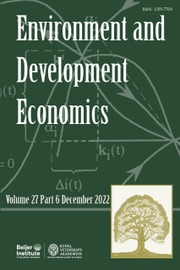No CrossRef data available.
Article contents
Gender disparities in the prevalence of undernutrition in India: the unexplored effects of drinking contaminated water
Published online by Cambridge University Press: 27 December 2024
Abstract
Stunting, a manifestation of chronic malnutrition, is widespread in India. This, coupled with biased preferences of parents towards their eldest sons, has led to stunting and underweight among girls that grows sharply with increasing birth order. We study the impact of an environmental water pollutant on child growth outcomes in arsenic contaminated regions of India. Using a large, nationally representative household survey and exploiting variation in soil textures across districts as an instrument for arsenic, we find that arsenic exposure beyond the safe threshold level is negatively associated with height-for-age and weight-for-age. Negative effects are larger for girls who are born at higher birth orders relative to the eldest. This, we argue, suggests that the lack of adequate nutrition and health care during early childhood can make girls more vulnerable to external environmental hazards due to their lower immunity and underdeveloped bodies.
- Type
- Research Article
- Information
- Copyright
- Copyright © The Author(s), 2024. Published by Cambridge University Press


